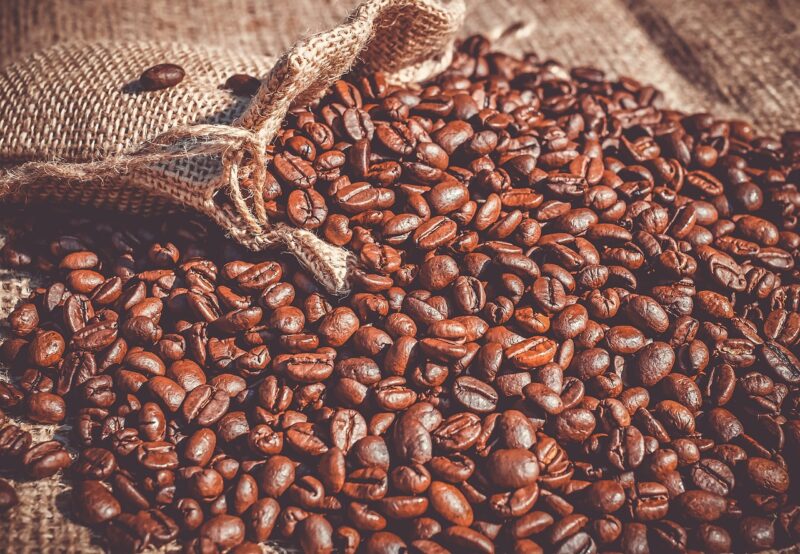How Coffee Growing Regions Influence Bean Flavor Profiles and Strength
November 12, 2024

Coffee is more than just a morning pick-me-up; it is a complex beverage shaped by multiple factors such as cultivation methods, processing techniques, and—at its core—the region where the coffee beans are grown. The nuances of flavor and strength that distinguish one cup of coffee from another can be largely attributed to the geographical and environmental factors found in coffee-growing regions. In this article, we will explore how different regions around the globe cultivate their coffee and the unique flavor profiles and strength that result from these geographical influences.
1. The Three Main Coffee Growing Regions
Coffee is primarily cultivated in the ‘Bean Belt,’ which lies between the Tropics of Cancer and Capricorn. This area is characterized by four main growing regions: Central and South America, Africa, and Asia-Pacific—all of which contribute distinct flavors and strengths to the coffee produced within them.
– Central and South America: Countries like Colombia, Brazil, and Costa Rica characterize this region. Often, beans from here have a bright acidity, with flavor notes ranging from citrus and berries to chocolate and nuts.
– Africa: Renowned for its vibrant, fruity profiles, African coffees—particularly from Ethiopia and Kenya—tend to exhibit a floral aroma and a medium to high acidity.
– Asia-Pacific: Countries like Indonesia and Vietnam are recognized for their robust, earthy beans. These coffees typically have lower acidity and a fuller body, often with herbal or spicy notes.
Understanding which region your coffee originates from can greatly enhance your appreciation of its unique traits.
2. Climate: A Major Influencer
Coffee plants thrive in specific climatic conditions. Factors such as elevation, rainfall, and temperature play significant roles in developing the flavors of coffee beans:
– Elevation: Coffee grown at higher altitudes usually develops more acidity and complex flavors. Regions such as Colombia and Guatemala produce exceptional high-altitude coffees that are bright and fruity. The cooler temperatures slow the growth of the coffee cherries, allowing more time to develop flavor.
– Rainfall: Consistent rainfall is critical for coffee plants, but the timing and quantity also matter. For instance, regions with dry harvest periods tend to produce coffee with low moisture content, affecting the flavor profile. This is evident in many African coffees, where a distinct dry season allows for optimal cherry ripening.
– Temperature: Ideal temperatures range from 60°F to 70°F. Too much heat can lead to overripe cherries, which may impart unwanted flavors. Conversely, too cool conditions can lead to underdevelopment.
As such, the local climate forms the backbone of the coffee’s flavor journey.
3. Soil Composition: The Earth Beneath the Beans
Beyond climate, the soil composition in coffee-growing regions greatly influences flavor outcomes. Soil types vary widely and can impact the nutrients available to the coffee plants. In general, volcanic soils are considered among the best for coffee cultivation due to their richness in minerals.
– Nutrient-Rich Volcanic Soil: Many coffee-growing regions, particularly in Central America and parts of Indonesia, benefit from volcanic soil. This soil is high in potassium, calcium, and magnesium, promoting sweet taste notes and balanced acidity.
– Clay and Sandy Soils: Clay soils often hold water well, providing consistent moisture for coffee plants, which can enhance body and richness. Sandy soils, while draining quickly, may lead to less acidity but can produce crisp and clean flavor profiles.
The interaction between soil type and coffee genetics ultimately shapes the flavor outcomes.
4. Processing Methods: Harnessing Nature’s Bounty
After coffee is harvested, processing methods further influence the final flavor. Two primary methods dominate: the dry (natural) process and the wet (washed) process:
– Dry Processing: Common in regions with limited water supply, this method involves drying the entire cherry before removing the beans. This can lead to fruitier and sweeter coffees, often found in African varieties. The natural sugars in the fruit lend a unique flavor profile.
– Wet Processing: More prevalent in countries like Colombia, this method involves removing the cherry’s pulp before fermentation. This accentuates the coffee’s acidity and clarity, producing a crisp flavor profile often characterized by bright and fruity notes.
The choice of processing method allows roasters to intentionally handcraft the flavor outcomes of their coffee.
5. Flavor Profiles by Region
The final flavor profile of coffee varies significantly by region, characterized by specific tasting notes:
– Central and South America: Bright acidity, mild body, with flavors like chocolate, caramel, and nuts. Colombian coffee, for instance, is known for its balance and sweetness, while Brazilian coffee often has a nutty or chocolatey profile.
– Africa: High acidity, full-bodied, floral aromas, and fruity notes, such as blueberry, lemon, and jasmine. Ethiopian coffee showcases wild, fruity flavors, making it highly appealing to coffee connoisseurs.
– Asia-Pacific: Low to medium acidity with strong earthy flavors. Indonesian coffees often present rich, herbal notes with a full body.
These distinct flavor profiles can help coffee drinkers choose their beans according to personal taste preferences.
Conclusion: The Importance of Region in Your Coffee Experience
Understanding how coffee growing regions influence bean flavor profiles and strength opens a world of appreciation for coffee enthusiasts. From the tropical climates of Central America to the unique soils of Ethiopia and beyond, every cup of coffee tells a story shaped by its origin. As you explore coffee varieties, consider the region, climate, soil, and processing methods, and you’ll find that each element contributes to a cup of coffee that reflects its roots.
With this knowledge, you can enhance your coffee experience and select beans that align with your flavor preferences and strength desires. Whether you’re brewing a single-origin espresso or savoring a nuanced pour-over, remember how geography and cultivation shape every sip.








